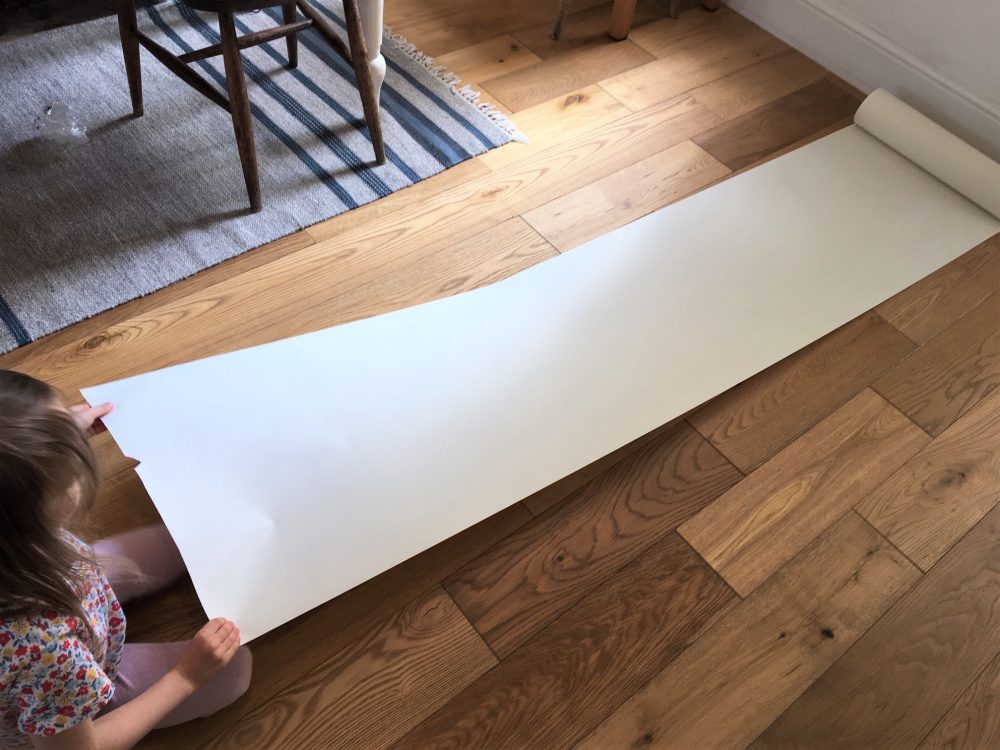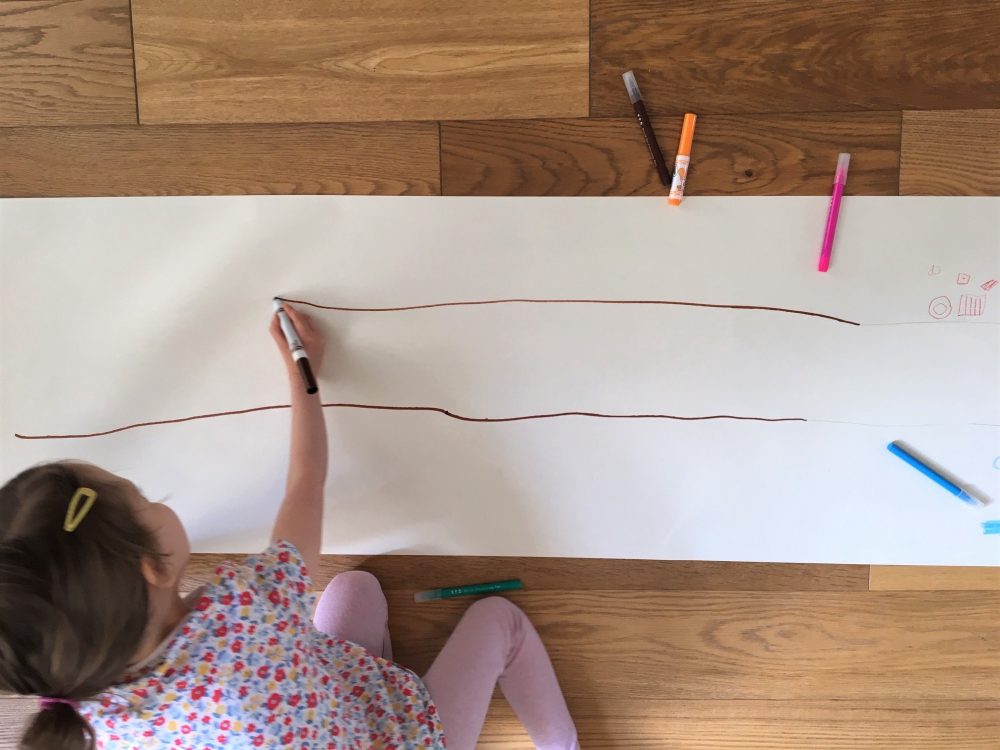One Roll of Paper, Two Activities
In this post AccessArt team member Rachel Thompson demonstrates two activities using one large roll of paper: A Friendship Map and a Figurative Zentangle.

This post is part of a ‘table top’ collection of activities created during ‘lockdown’ and are designed to be simple in terms of delivery and require easy to find art materials. You can see the full collection on Rachel’s contributor page here.
A large roll of paper is something I consider a staple art material for having at home. I’ve been using (and re using) them for a few years now and always find them a great material for setting something open ended and exploratory. When faced with an expanse of white paper stretching along the floor or stuck to the wall the imagination really can go wild!
The materials for these two activities are very straightforward:
- A large roll of paper
- Pens, pencils, crayons, paints – a large ish selection to choose from is always great
Activity One: A Friendship Map
At a time when seeing our friends and loved ones isn’t possible, it’s nice to find ways to stay connected at least in thought. Using our roll of paper we made a friendship map of our local area, drawing our street and neighbouring streets, and illustrating it with the houses of our friends and neighbours as well as our own.
We began with spreading the paper out across the floor.

This was followed by scattering a range of drawing materials onto the paper so as to create choice and variety. This included coloured pencils, felt tip pens, chalk and wax crayons. There’s really no limit here – you could use different papers to make collage a feature of it too. Ask your child to choose. Getting to know art materials and what they do is the best way to instill creative confidence at at early age.

Next, we spent a few moments talking about our friends in the area and what positive things we think of when we are reminded of them.
We then marked out a simple linear road onto which we would draw the houses.


We then started adding houses. I began by drawing our own houses first as a starter, and then stood back to let it evolve naturally!
Judging proximity and location isn’t exactly easy for five year olds, so our map inevitably ended up a little…. ‘fluid’ – but this doesn’t matter. The point is to let the child explore the paper and navigate around it how they like.
Some possible questions to ask to keep the focus:
- Does (name of friend or neighbour) have a tree or flowers outside their house?
- What colour door do they have?
- What toys or special games do you think of when you think of (friend or neighbour)?
- What colours remind you of (friend or neighbour)?
- What else might there be in the street apart from houses?

Rainbows have become synonymous with the times, and one was added onto our map as this is what my daughter is reminded of when she thinks of her cousins.


Depending on the age of your child or children, a friendship map could take up a whole hour, half a day – or even longer! it could be something they dip in and out of and add to as their mood dictates. It’s a positive thing to encourage a longer term project that can evolve over time. In our case, attention span was a slight barrier, as was the fact my daughter doesn’t have siblings to bounce off. Nevertheless, she really enjoyed it and it was great to get our lovely new roll of paper out!
Activity Two: A Figurative Zentangle
A Zentangle (a fun way to draw structured patterns) isn’t explicitly what I set out to achieve with this activity- but it appeared to happen that way so we went along with it!
Something we’ve done several times before and is always a huge hit is drawing around each other on the rolled out paper. It’s so entertaining for children to do this, and to draw round their parents is always pretty funny for them. The effect created from crossing outlines over and around each other is really interesting, and makes for a dynamic exercise in mark making.
We simply flipped over our friendship map and began.




Once we’d drawn around each other a few times each, we stood back and observed all the different lines and shapes we had created. It’s a good moment to pause and reflect on the marks on the paper, and how the different colours used for each outline emphasise the composition.
It was then time to ‘zoom’ in on isolated shapes that had formed in and amongst the figures and begin adding blocks of colour and pattern. Rainbows are clearly on my daughter’s mind at the moment as the first thing she did was to colour my hand as one!
Other shapes began to emerge as we coloured them….
Similarly to the friendship map activity, your figurative zentangle can be rolled up and brought out again another day to be added to. These are two projects that can become extended over time and something older children may want to try independently. There’s also scope for cutting up the finished piece and creating a whole new picture by sticking the patterns back together in different ways. Have a go – and have fun!
You can find more resources by Rachel here.








